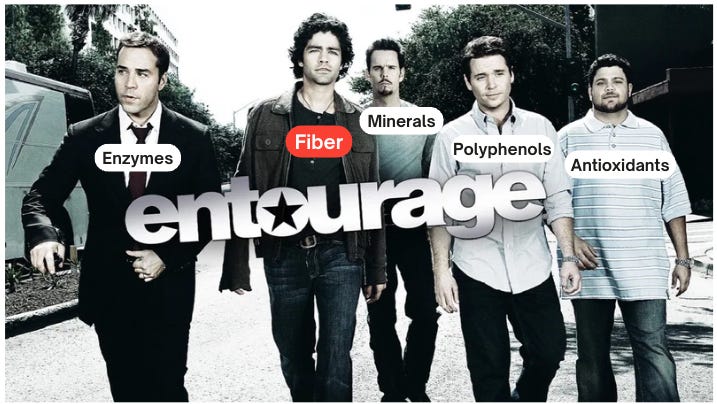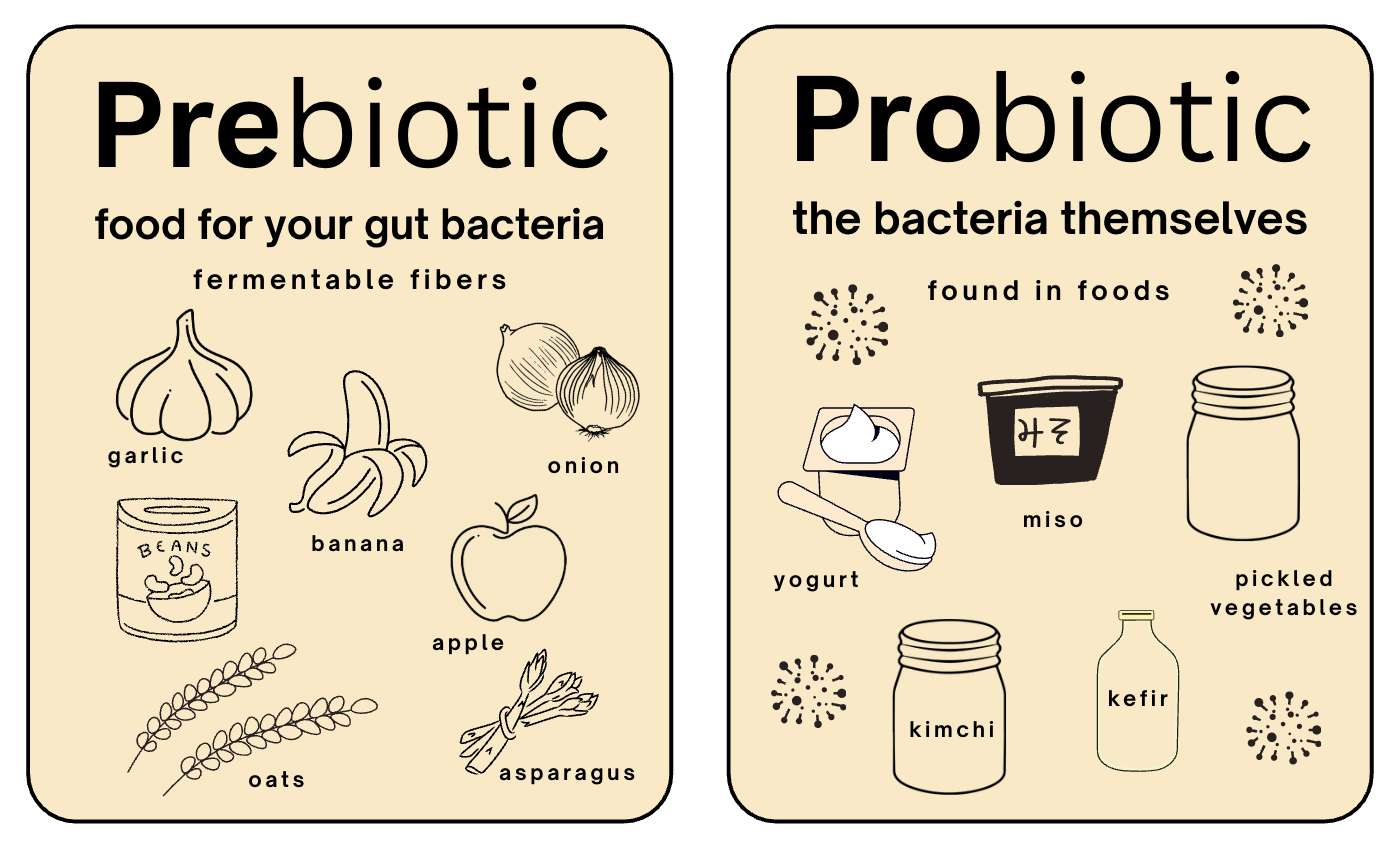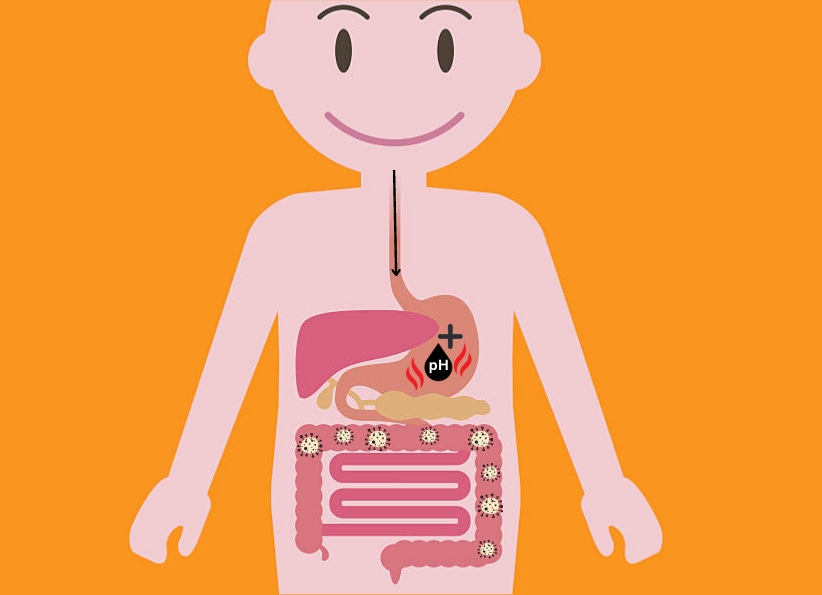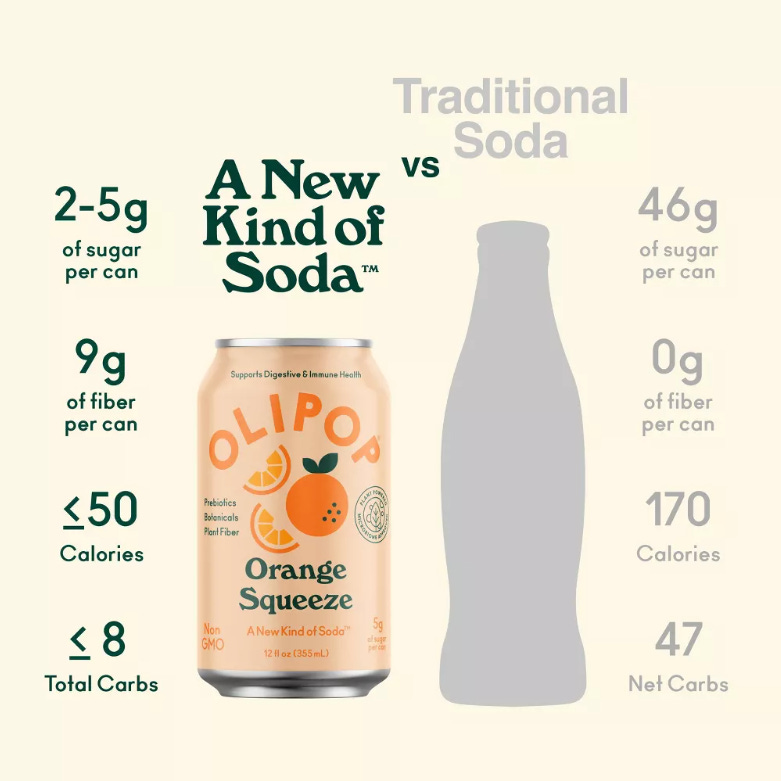Fizzy Logic: Can a Soda Really Fix Your Gut?
Why the entourage effect matters—and why real food still does it better.
Quick note before we dive in…
If you haven’t already, please take a moment to fill out this short survey. It’s just 6 questions and will take 2–3 minutes. Your input helps me understand what’s working in Fed, what’s not, and what topics you're most curious (or confused) about. Thanks so much!
They come in bright, cheerful cans with names like Poppi and Oli—and promise to “balance your gut,” “boost your microbiome,” or “support digestion.” If you haven’t spotted them yet, you probably will soon. And if you’ve already cracked one open, you might feel like you’ve made a healthy choice.
But here’s the truth no one’s putting on the label: a fizzy drink can’t fix a fiberless diet. And all those gut-loving promises? They hinge on one critical thing left out of the conversation: the entourage effect.
Before you sip another pre- or probiotic soda, let’s talk about what that means—and why it matters.
The Entourage Effect
If the term rings a bell, think Entourage—the HBO show where the star never goes anywhere without his rowdy crew. Same idea here: nutrients tend to work better with their squad.
The entourage effect refers to how nutrients perform best when consumed with other naturally occurring compounds in whole foods. Fiber is great, but it works even better alongside antioxidants, polyphenols, enzymes, and minerals. Together, they amplify each other’s benefits. Strip one from the group, and the synergy fades. It’s not that isolated nutrients are useless—they’re just not as effective without context. It’s the difference between a Jonas brother and The Jonas Brothers.
Prebiotics vs. Probiotics: Quick Refresher
Before we get too deep into bubbly claims, let’s make sure we’re clear on the basics:
Prebiotics are fermentable fibers—food for your gut bacteria. Not just any fiber, but the kind gut bugs can break down into short-chain fatty acids and gases.
Probiotics are the bacteria themselves—found in fermented foods like yogurt, kimchi, miso, and kefir. Ideally, they survive stomach acid and reach your colon, where they can pitch in with your existing microbiome.
But many probiotics don’t survive the journey. And even if they do, they may not stick around—especially if you’re not feeding them regularly with the right prebiotics.
Where Sodas Get Tricky
I get what the founders of these soda companies were thinking. Most people don’t eat enough fiber-rich foods but have no problem knocking back a can of soda—so why not combine the two? Makes sense, in theory. The catch? Most prebiotic sodas rely on a single type of fiber: inulin, a refined extract from chicory root. It’s marketed as a gut health booster, but the reality is a bit messier.
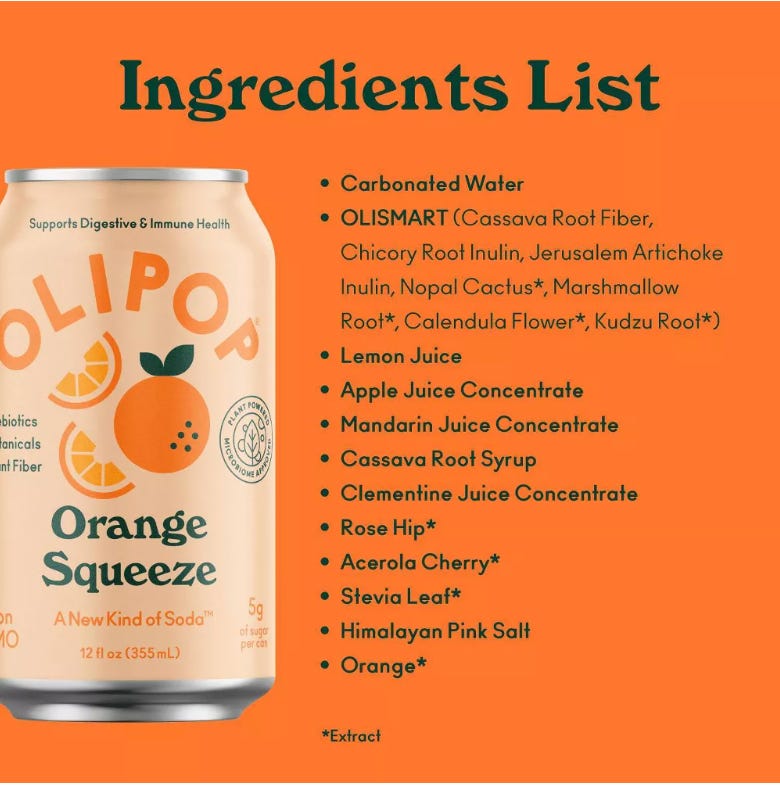
A single can of most prebiotic soda delivers around 9 grams of inulin—a bolus dose, or one big hit all at once. That’s the digestive equivalent of waking up to a firehose instead of a gentle mist. Even healthy folks can end up bloated and gassy.
For people with IBS or sensitive digestion, that dose isn’t just intense—it can be outright disruptive. Inulin is a FODMAP, meaning it ferments quickly and often triggers the symptoms these sodas claim to help.
And the biggest issue? It’s the opposite of the entourage effect. When fiber is part of whole foods—lentils, oats, veggies—it arrives bundled with other nutrients that slow digestion and support synergy. Isolated inulin in soda skips the supporting cast. It’s like dropping a fiber bomb in your intestines.
Animal studies also raise red flags: in mice with gut imbalances, refined inulin was linked to liver issues—even cancer. We’re far from drawing human conclusions, but still… maybe don’t volunteer your gut as the test case.
Prebiotic sodas may be trendy, but that doesn’t mean they’re right for everyone. Just because something is labeled “gut-friendly” doesn’t mean your gut will agree.
Here’s what to keep in mind:
Sensitive gut? Proceed with caution.
Inulin is a FODMAP—a type of fermentable carb that can trigger bloating, gas, and discomfort, especially in people with IBS. If your gut’s already reactive, this may do more harm than good.Mind the sweeteners.
These sodas often use a mix of real sugar and stevia. While lower in sugar than regular soda, stevia’s impact on the gut microbiome is still unclear. Some studies suggest it may alter microbial balance—something to keep in mind if you're drinking them daily.Dose matters.
Research supports inulin in doses of 5–20 grams per day—spread out, and with food. A single can delivers 9 grams all at once, which can overwhelm your system rather than support it.Pregnant or under 12? Stick to food.
Whole-food prebiotics like oats, lentils, and bananas are safe. But high doses of isolated inulin haven’t been well studied in pregnancy or kids—so food-first is still the better bet.
These drinks might be a fun sidekick. But they’re not the hero. And if “better than Coke” is the bar… it’s time to raise it.
Personally, I’m taking a pass on these prebiotic sodas. I’d rather get my fiber the old-fashioned way—through real food.
Here’s what does make the hydration cut for me:
I hydrate with plain, flat water—always from a bottle with a straw. I don’t know if it’s science or sorcery, but I drink way more that way.
When I want something a little different, I’ll reach for a plain or flavored seltzer. I’m partial to lime flavored Adirondack or Polar.
And when I’m feeling fancy? A Spindrift sparkling water (grapefruit is my favorite) over ice with a lime wedge hits the spot.
I get the appeal—these drinks are colorful, cleverly branded, and sprinkled with feel-good words like “gutsy” and “happy bellies.” But at the end of the day, you can’t outsource gut health to a soda.
If you love the taste and your gut’s on board, great. But if you’re hoping for a shortcut to a healthier microbiome? That’s just wishful thinking in a can.





